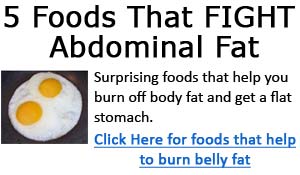Does this mean that we should go completely nuts over protein?
Certainly not. It is vital that we keep a well-balanced diet of protein, good carbohydrates and essential fatty acids. The ratio that works best would be about 30% protein, 40-45% low-glycemic good carbs( 4-5 servings a day of fruits and vegetables, 1-2 servings of whole grains) and 25-30% essential fatty acids.
Lack of sleep makes us fat. Insomnia releases the stress hormone cortisol which stimulates the appetite and slows down the metabolism. That ’s why sleep is so important not only for weight management but the release of Human Growth Hormone. Studies show that Growth Hormone is secreted in Stage 3 and Stage 4 sleep, the first hour or two after reaching deep sleep. So if we don’t get to the deep sleep stage, we are sabotaging our body’s capacity to repair and renew tissues and cells. Unless we get to that deep sound sleep zone, our bodies will not be releasing Growth hormone efficiently.
We cannot emphasize enough how important exercise is as an anti-aging tool. However, not all forms of exercise release Growth Hormone. Again, studies show that for a workout to bring about the release of Growth Hormone, it must be sustained and strenuous enough to create muscle exhaustion. The exercise must be at the right level of intensity—a level that is not so high that it causes injury and suppresses the body’s release of the hormone( chronic marathoners, for example, show decreased levels of Growth Hormone),yet strong and resistant enough to bring about fat loss and metabolic efficiency.
A brisk walk around the park or 20 minutes on the treadmill will raise your heart rate, but it will not help you release Growth Hormone. What is needed is a consistent program of resistance training ( 15 minutes 4 times a week) using weights or dumb-bells. Interval training for runners come under this category as well. Short, sustained bursts of anaerobic workouts ( like weight lifting, interval training) that create an oxygen deficit in the muscles are the most appropriate forms of activity because the oxygen deficit shifts our muscles from burning carbohydrates to burning fat. This kind of exercise increases our metabolic rate and keeps it elevated for a good 48 hours after exercise—which means that we are continually burning fat even after our workout. At the same time, when muscles contract and relax during multiple sets of resistance exercise, the body is stimulated to produce significant levels of Growth Hormone to repair and renew the tissues that have been placed under optimal stress.
So what is the best form of exercise? A combination of both aerobic and anaerobic workouts. This means 30 minutes of brisk walking, running to get your heart rate up PLUS 15 minutes of weight training, resistance training, intervals to get your muscles to the point of depletion so necessary for the stimulation of Growth Hormone. Such a program done consistently 4-5 times a week will definitely bring results.

